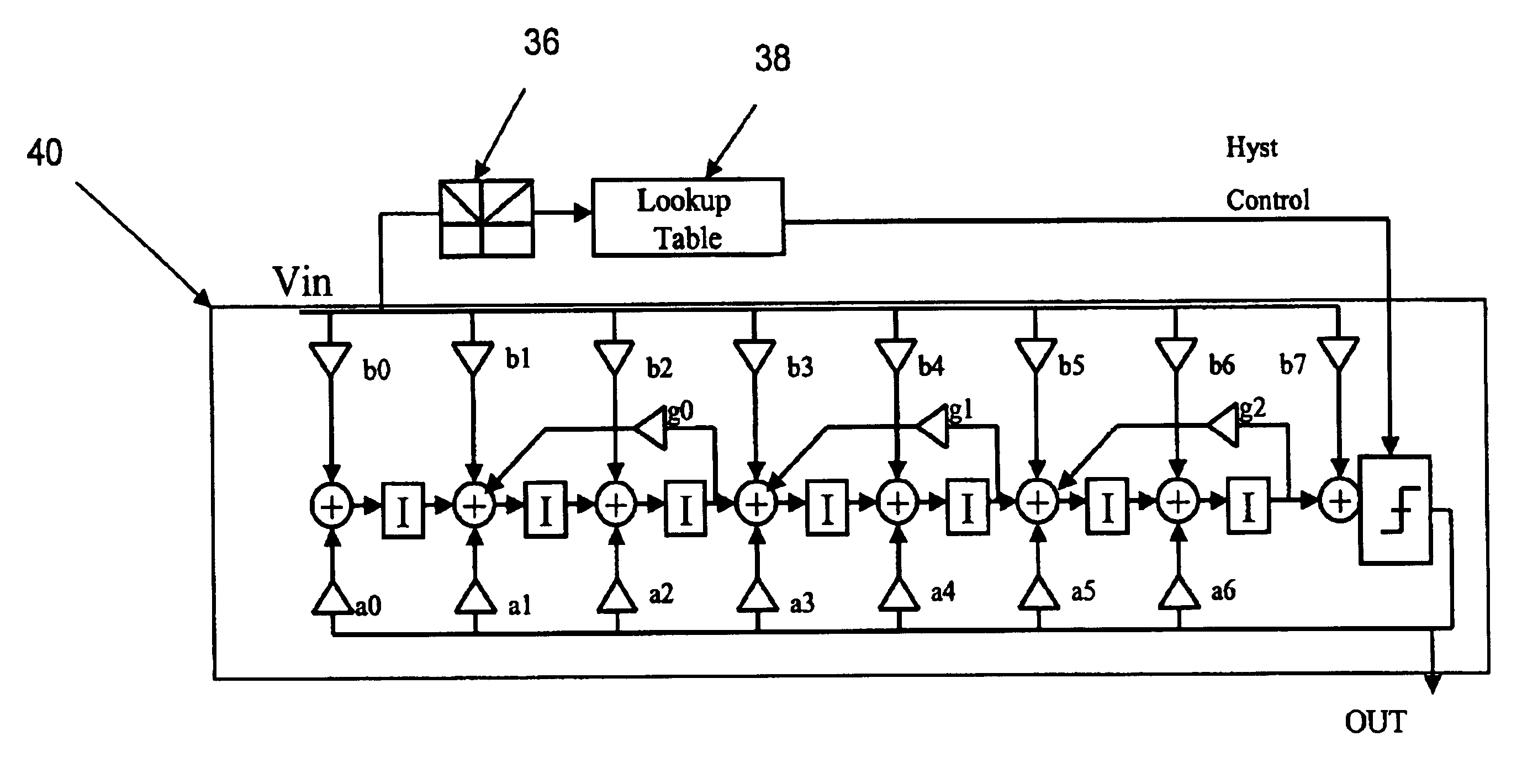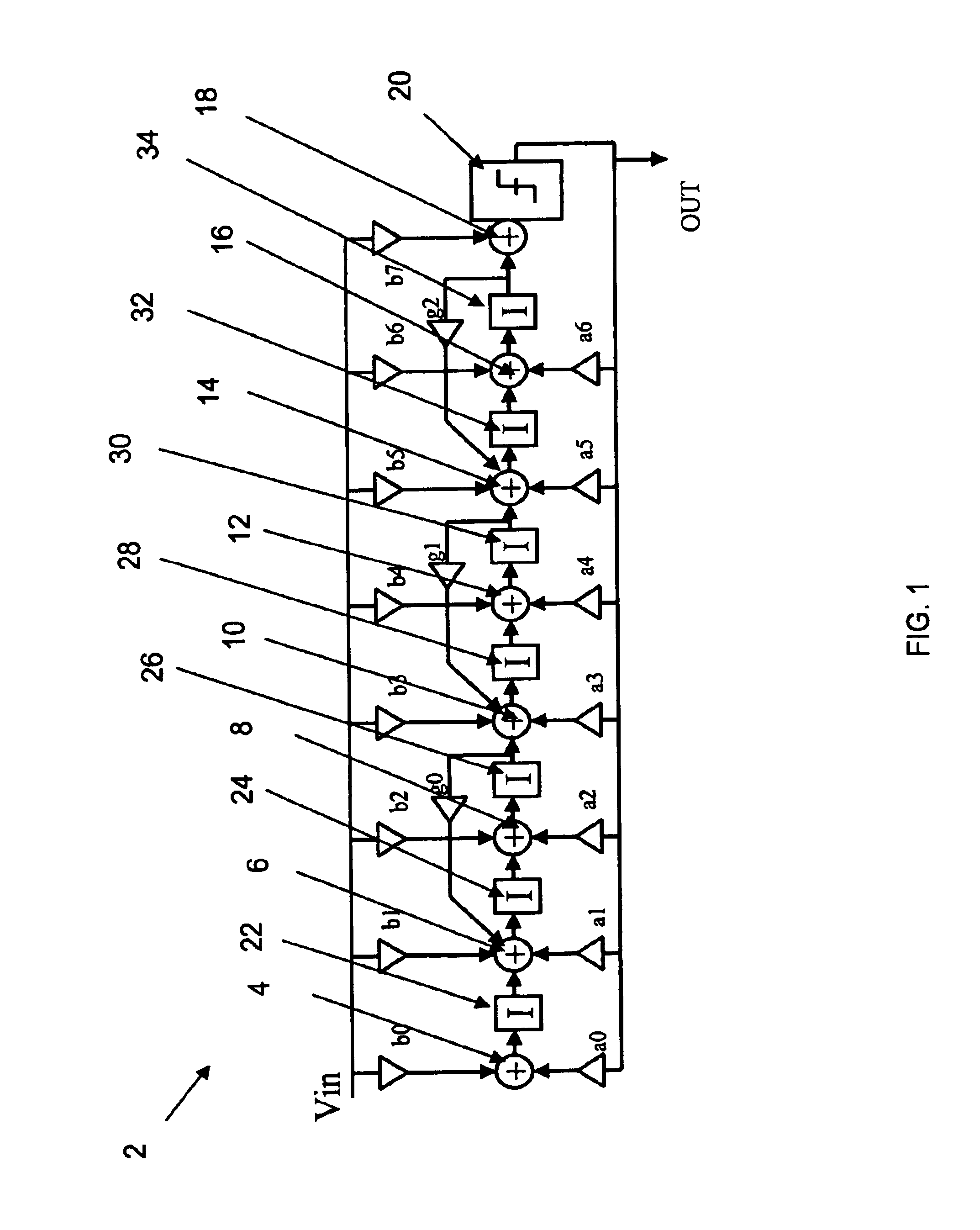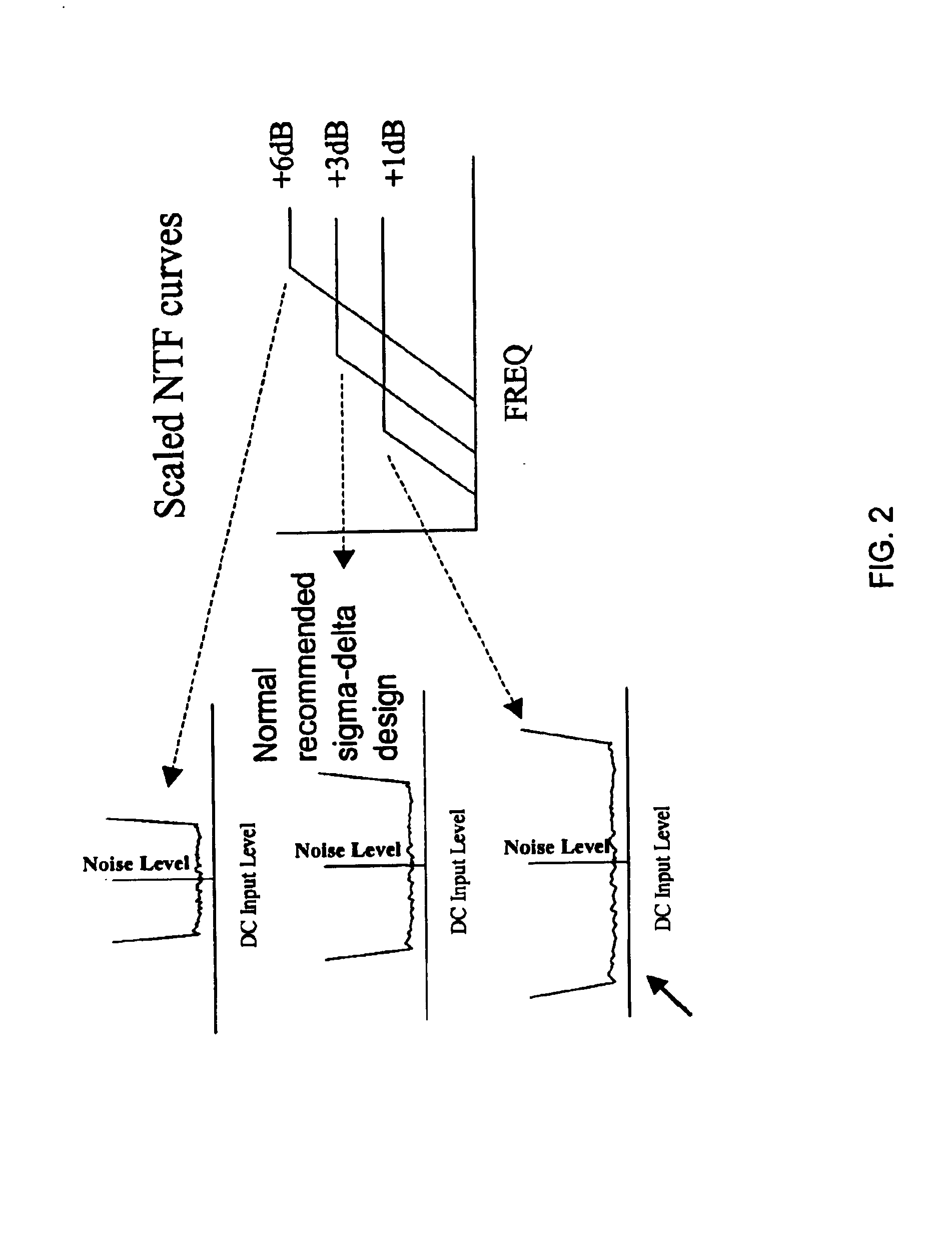Sigma-delta modulator with reduced switching rate for use in class-D amplification
a modulator and switching rate technology, applied in the direction of amplifiers, instruments, amplifiers, etc., can solve the problems of low efficiency of conventional audio power amplifiers, large physical amplifier designs, and reduced efficiency, so as to reduce the transition rate of modulator modules and reduce the transition rate of modulators
- Summary
- Abstract
- Description
- Claims
- Application Information
AI Technical Summary
Benefits of technology
Problems solved by technology
Method used
Image
Examples
Embodiment Construction
[0023]FIG. 1 shows a sigma-delta architecture. This architecture can be implemented either with analog circuits (for a system with an analog input and a 1-bit digital output), digital circuits (for a system with a multi-bit digital input and a 1-bit digital output) or a mix, where the early stages of integration may be done using analog circuits, and later stages are done using digital circuits. This architecture produces a 1-bit output at a clock rate that is significantly higher than the highest frequency contained in the input signal (for example, 256*Fs, where Fs=48 Khz for audio applications), and the feedback action of the loop will heavily suppress the quantization noise introduced by the 1-bit quantization, such that the SNR over a limited frequency band (usually the audio band from 20-20 KHz) is very high.
[0024]The sigma delta modulator 2 can be built in a variety of ways. For analog-input systems, the integrators 22-34 are typically analog integrators, which can be impleme...
PUM
 Login to View More
Login to View More Abstract
Description
Claims
Application Information
 Login to View More
Login to View More - R&D
- Intellectual Property
- Life Sciences
- Materials
- Tech Scout
- Unparalleled Data Quality
- Higher Quality Content
- 60% Fewer Hallucinations
Browse by: Latest US Patents, China's latest patents, Technical Efficacy Thesaurus, Application Domain, Technology Topic, Popular Technical Reports.
© 2025 PatSnap. All rights reserved.Legal|Privacy policy|Modern Slavery Act Transparency Statement|Sitemap|About US| Contact US: help@patsnap.com



